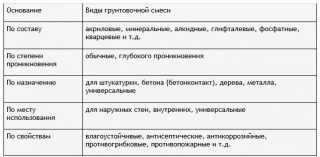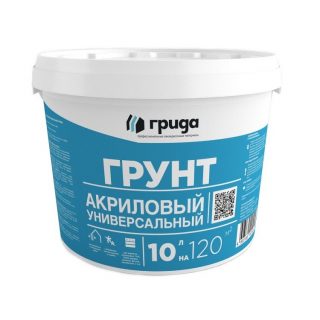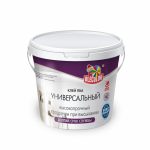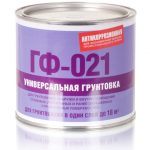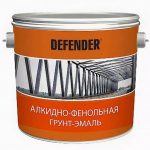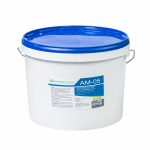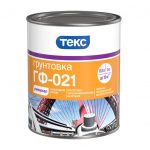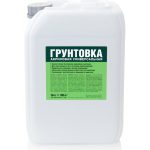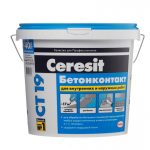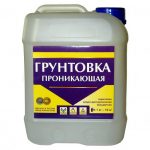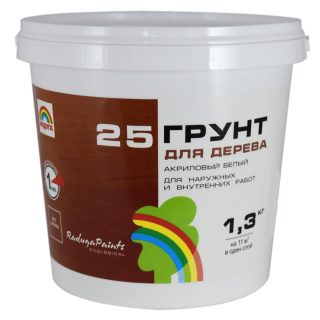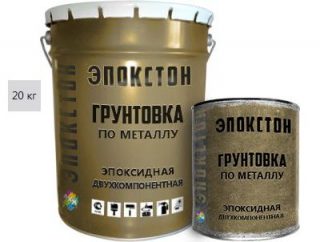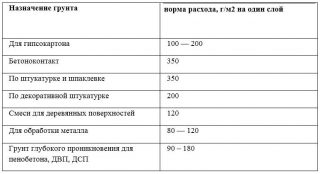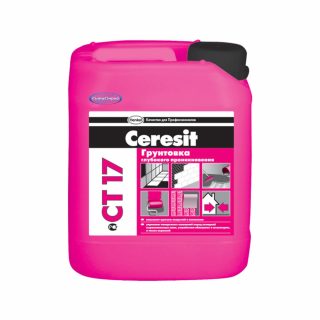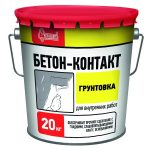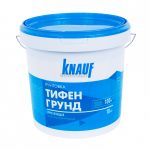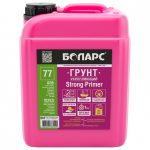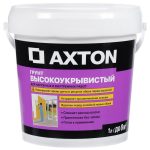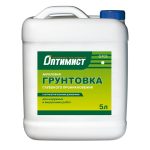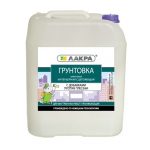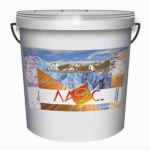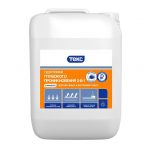The primer is a special impregnation for strengthening the surface, increasing adhesion with the coating material. The purpose of the primer is different, depending on the base material and finish, the purpose of processing. Without the use of primer, it is impossible to professionally repair the wall, floor, ceiling, apply leveling layers, and stick the tiles.
Purpose and properties of the material
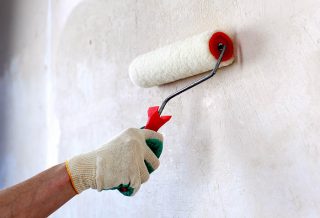
Before plastering, impregnate the wall with soil so that increase the strength of the outer layer of the wall... For example, a structure made of sand-lime brick, wood or concrete will pull moisture out of the solution, so the plaster will harden in the wrong conditions. To prevent this from happening, you need to reduce the saturation of the base with the help of soil. The primer is applied as the first layer before surface finishing.
Water-dispersion compositions differ in many parameters, their function also differ:
- improving the adhesion of the overlying layers with the lower material;
- strengthening the upper layer of the substrate, binding loose particles on the surface;
- protection of the base from moisture, aggressive effects, corrosion (metals);
- antifungal treatment, antiseptic effect.
Plastered walls perform in several stages, with each layer sanded and primed. If this is not done, the next layer of putty will be applied over the dusty surface. This will lead to cracking and flaking.
Before wallpapering also carry out priming to remove dust, strengthen the surface. Wallpaper glue forms a strong film, which will eventually lag behind the unprimed weak layer. The same applies to paint, enamel, varnish - to increase adhesion, you need to saturate the surface before work.
Varieties of primers
The raw materials for production are:
- synthetic or natural, solid or liquid components that contribute to the formation of a film (drying oils, formaldehyde, urea, alkyd, epoxy resins);
- concentrated dispersions or solutions in organic diluents or water;
- pigmenting substances (zinc, red lead);
- filler (mica, talc, chalk).
Adhesive solutions create a rough layer on the surface due to the granular filler. Quartz sand is introduced into the composition; after solidification, the plane resembles emery. These types are used for heavy putties (starting), or in the case of paint work. The soil is colored or white. Mineral compositions are applied to concrete, brick, gas blocks. Ground cement is present in the solutions.
All varieties penetrate well into the pores; after drying, they do not allow water to pass through. The polymers included in the mixture have high film-forming properties. Primer films resistant to hydrolysis and electrolytes.
By composition
Other varieties depending on the recipe:
- Glyphthalic. The primer is used on iron, steel in rooms with a humidity of 40 - 60%. Dries completely in 24 hours.
- Polyvinyl acetate. Special solution for use under similar paints. Dries quickly, within 30 minutes.
- Polystyrene. Used for processing wooden parts, walls, on fresh plaster. You cannot work inside the house, since the soil in the recipe contains substances harmful to health.
- Perchlorovinyl. Has a pungent odor that disappears after drying. Used on metal, brick, concrete, plaster. Dries 1 - 2 hours.
- Phenolic. Wood and metal are processed, the curing speed is 15 hours.
Alkyd compounds transform rust, protect metal from corrosion. They are used to cover old and new metal roofing, reinforcement in reinforced concrete structures, and parts of mechanisms. There are alkyd solutions for wood, glass, plastic.
By type of exposure
The formulation contains filler or finely dispersed acrylates, polymers.
Depending on this, soils are distinguished by mode of action:
- concrete contact;
- penetrating compounds;
- versatile materials.
Concrete contact belongs to the adhesion category with the inclusion of a mineral filler (cement, sand), as well as polymers. Improves adhesion of materials to plaster, putty. The surfaces of concrete, old enamel, and tiles are treated with a granular primer so that the tile glue adheres to them more strongly.
Penetrating mortars fix the upper loose layer of the base so that subsequent materials adhere well to it. Lagging particles are on the surface of bricks, old plaster, putty, concrete. Processing with deeply absorbing soils is done under wallpaper, paint, putty. Typically penetration solutions are sold ready-to-use or as a concentrate.
Universal types combine a strengthening function with an adhesive effect. The material is well absorbed into the surface, improving the adhesion of the layers. It is also used on all materials, while surfaces not cleaned from dust should be avoided. Such soils are taken into work if it is not possible to purchase special penetrating compounds or concrete contact.
By type of base
Specialized formulations apply if necessary:
- give the base antibacterial properties;
- protect against the development of fungus, mold.
For concrete surfaces use concrete contact, alkyd deep penetrating impregnation. Wooden surfaces and structures are protected with phenol and polystyrene based materials. Priming for metal used to protect from moisture. Such a film assumes further coloration.
- phosphating based on phosphoric acid are characterized by good adhesion;
- passivating agents dull the electrochemical properties of the metal, reduce the risk of corrosion;
- insulating contain alkyd and epoxy resins;
- protective include zinc particles in the formulation.
Antiseptic soils contain additives against the development of microorganisms. They are often made on the basis of deeply penetrating compounds.
Rules for applying the composition

Priming is carried out at an ambient temperature not lower than + 5 ° С and not more than + 35 ° С... Optimal humidity air in the room or outside should be within 40 - 75% depending on the type of solution.
Features of work:
- using a brush, long-handled roller or spray;
- walls are cleaned of irregularities, knock down weak areas, plaster;
- the soil is diluted according to the instructions on the package, one-component is diluted with water or a solvent, two-component are combined before work;
- apply a thin layer to the surface so that there are no smudges and non-primed places;
- hard-to-reach areas are smeared with a brush or a spray jet is directed there;
- the first layer dries, depending on the type of soil, common acrylic compounds form a film after 2 - 5 hours;
- the second time the treatment is carried out after the first has dried.

Primer consumption
there is average consumption values per 1 m²:
- penetrating species - 100 - 120 g for the first layer, 50 - 70 g for the second;
- betokontakt - 200 - 500 g for the first layer, 150 - 300 g - for the second;
- universal type - 100 - 200 g for the first layer, 70 - 90 g for the second.

To accurately determine the flow rate, a control application is carried out by measuring the volume of the liquid, calculating the wall area.
Drying time
The parameter is important for the continuation of further finishing. The second layer is applied 3 hours after the first. Painting, wallpapering, work should be started on the second day after priming.
Errors
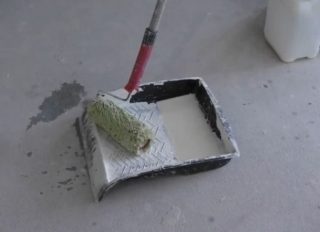
Inexperienced workers do the processing wrong. As a result, you have to redo it, if possible. After hardening, the primer becomes strong, it cannot be cleaned off with emery or diamond mesh.
Major misses in work:
- an excess solution is collected on the roller, as a result of a lot of splashes that spoil neighboring surfaces;
- the walls are poorly cleaned, after the composition has dried, there are a lot of tightly glued debris and particles on the surface;
- dilute the entire solution, which becomes inoperative over time.

Popular manufacturers
Popular brands:
- Henkel (Ceresit). Produces a wide range of building mixes, including primers. High quality has accompanied our products for many years. Soils are produced on the basis of artificial resins and water-dispersion.
- Knauf. The company has been manufacturing construction products for almost 100 years. Produces deep-penetrating priming solutions and mineral fillers of various sizes. The products are distinguished by an optimal ratio of quality and cost.
- Leroy Merlin (Axton)... The French association produces primers for various applications. The company has established operational quality control, so you can trust the manufacturer.
Russian manufacturers are not far behind foreign ones. Famous brands in the domestic market are enterprises producing: Prospectors, Tex, Optimist, Lacra, Bolars, Laes.

